There are over 220 living owl species around the world, but only nine of them can be found in Virginia. Read on to find out which owls have been recorded in the state, and when and where you are most likely to spot them.
1. Barn Owl (Tyto alba)

The barn owl is a large, dark-eyed species with both long legs and a heart-shaped face characteristic of the barn owl family (Tytonidae).
©Michael Shake/Shutterstock.com
These owls are widespread across the United States, including in Virginia, where they are year-round residents across much of the state. They are most common in agricultural lands and other open areas but are adaptable to a wide variety of other habitats. However, there has been a noticeable decline in their statewide population, prompting the species to be listed as a Species of Greatest Conservation Need Tier III (High) under the Virginia Wildlife Action Plan.
2. Barred Owl (Strix varia)

The barred owl is a large, dark-eyed species named for the stripes on its chest.
©FotoRequest/Shutterstock.com
Barred owls are common year-round residents across the state. They prefer old-growth forests but are adaptable to a variety of other wooded habitats.
3. Burrowing Owl (Athene cunicularia)

The burrowing owl is a small, yellow-eyed species that is unusual for being both a diurnal and colony-nesting owl.
©Mauricio S Ferreira/Shutterstock.com
Burrowing owls generally reside much further to the south and west. They are thus considered a vagrant species in Virginia, having only been recorded once in the state in recent decades, way back in January 1994. (Unfortunately, as noted in its record, this individual was killed by a vehicle strike soon after its discovery.)
4. Eastern Screech Owl (Megascops asio)
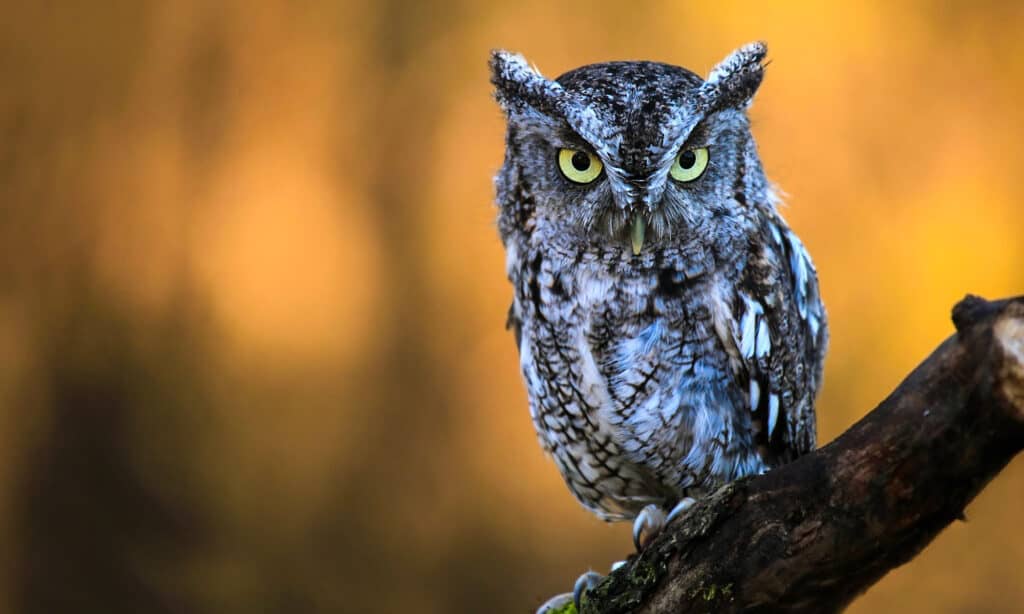
The eastern screech owl is a small, yellow-eyed species that occurs in both red and gray morphs.
©mlorenz/Shutterstock.com
Eastern screech owls are common year-round residents across Virginia. They reside both in forests and a variety of other wooded habitats including parks, gardens, and orchards. They also adapt well to suburban and even urban landscapes so long as good nesting trees are available!
5. Great Horned Owl (Bubo virginianus)
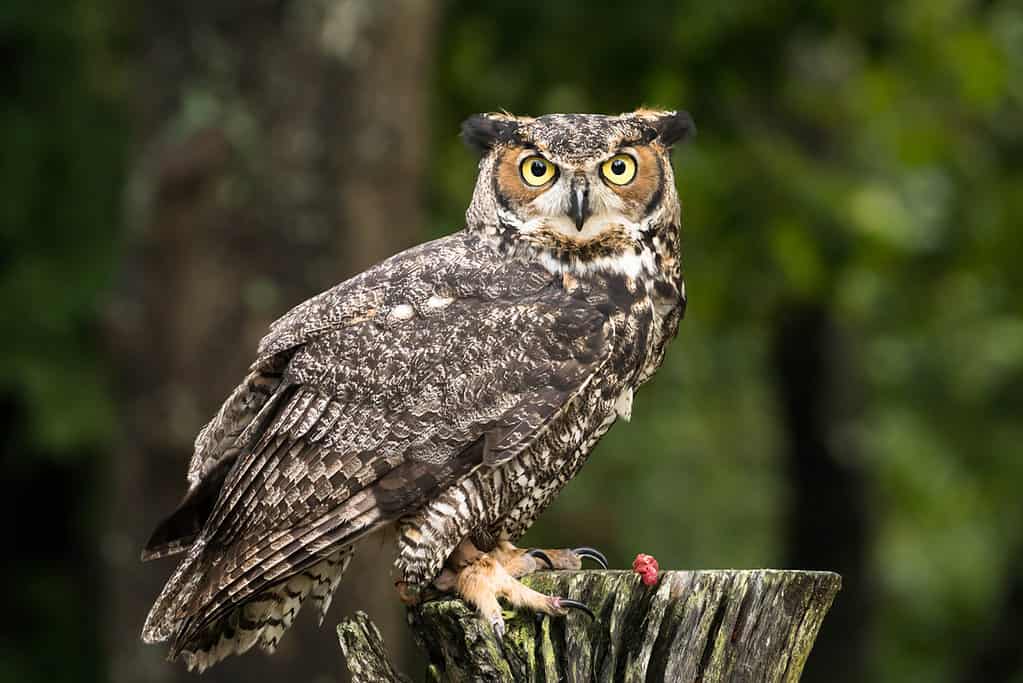
The great horned owl is a yellow-eyed species named for its ear tufts and is one of North America’s largest owls.
©iStock.com/makasana
Great Horned Owls are among the most common owls across North America, including Virginia, where they are year-round residents across the state. They utilize a wide variety of habitats, preferring a combination of wooded areas for nesting and roosting and open areas for hunting.
6. Long-Eared Owl (Asio otus)
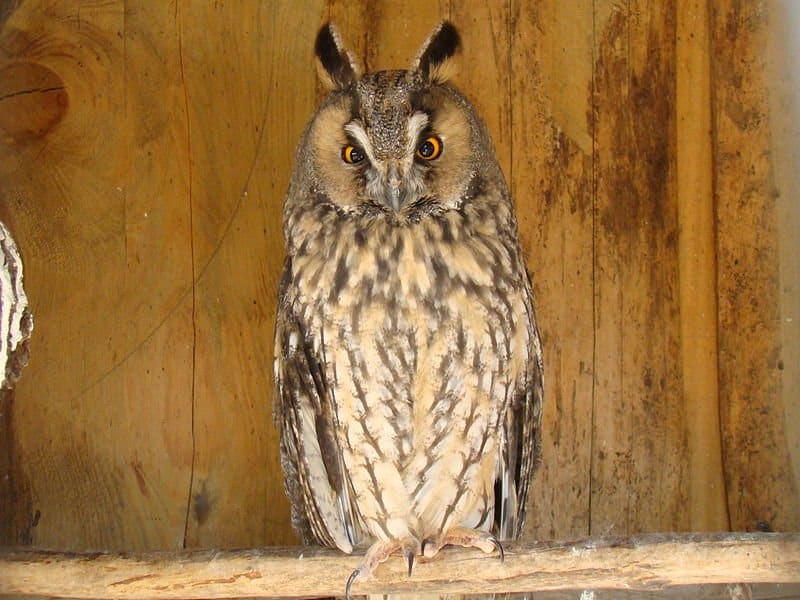
The long-eared owl is a medium-sized, yellow-eyed species also named for its prominent ear tufts.
Long-eared owls are migratory birds that are rare winter visitors to the state. Virginia is thought to be on the southernmost edge of their overwintering range, and they have only been recorded a handful of times in the northern part of the state. They prefer densely wooded habitats with access to open areas.
7. Northern Saw-Whet Owl (Aegolius acadicus)
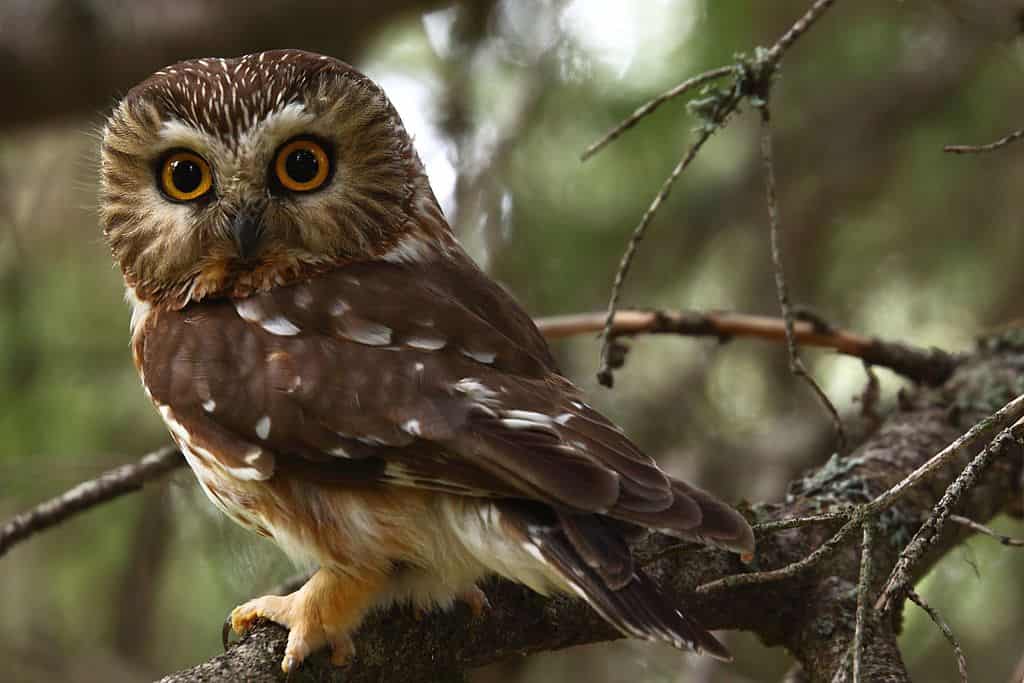
The northern saw-whet owl is a yellow-eyed species and is one of North America’s smallest owls.
©Kameron Perensovich, CC BY-SA 2.0, via Wikimedia Commons – License
Northern saw-whet owls are migratory birds that sometimes overwinter in Virginia. They are most likely to be encountered in the northern and western regions of the state. They prefer dense forests near open areas and water. Because of their rarity and declining population trend, Virginia currently lists the northern saw-whet owl is currently as a Species of Greatest Conservation Need Tier I (Critical) under the state’s Wildlife Action Plan.
8. Short-Eared Owl (Asio flammeus)
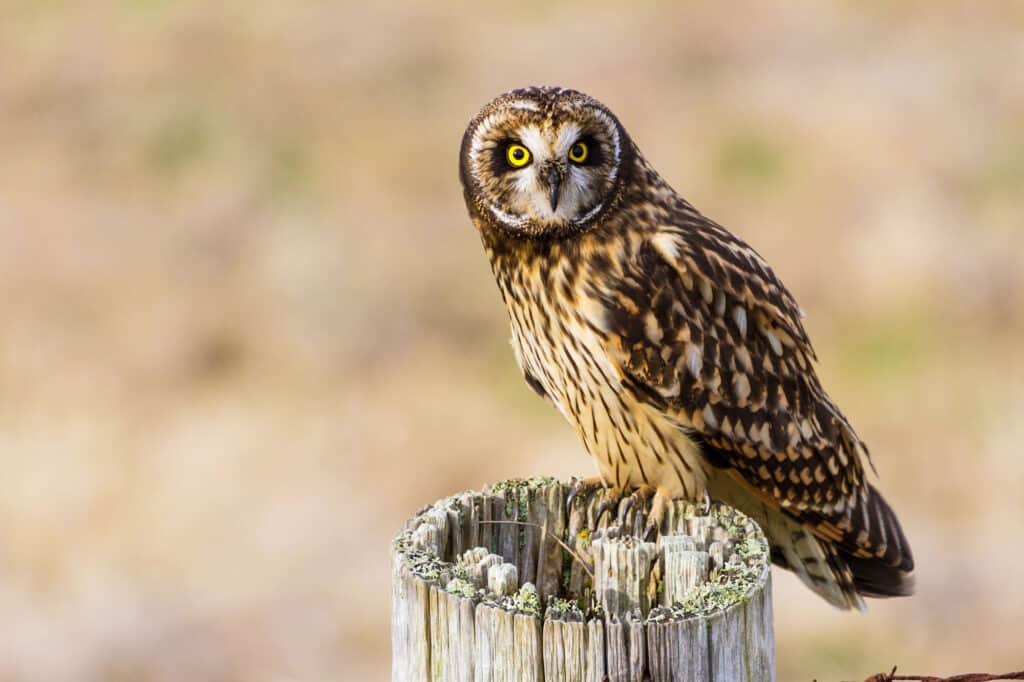
The short-eared owl is a medium-sized, yellow-eyed, diurnal species.
©iStock.com/Devonyu
Short-eared owls are migratory birds that spend winters in Virginia. They prefer open terrain. As a diurnal species, they are also more likely to be spotted during the day, unlike their more common nocturnal owl cousins.
9. Snowy Owl (Bubo scandiacus)

The snowy owl is a large, yellow-eyed species that is also the only primarily white owl.
©Carol Gray/iStock via Getty Images
Snowy owls breed in the Arctic tundra but occasionally appear in Virginia as part of irruptive migrations during the winter. The most recent recorded spotting was at Chincoteague National Wildlife Refuge in February 2022.
Summary of the 9 Types of Owls in Virginia
| Species | Where and When Found |
|---|---|
| 1. Barn Owl (Tyto alba) | year-round, statewide (threatened species) |
| 2. Barred Owl (Strix varia) | year-round, statewide |
| 3. Burrowing Owl (Athene cunicularia) | vagrant, not seen since 1994 |
| 4. Eastern Screech Owl (Megascops asio) | year-round, statewide |
| 5. Great Horned Owl (Bubo virginianus) | year-round, statewide |
| 6. Long-Eared Owl (Asio otus) | rare winter visitor, northern region |
| 7. Northern Saw-Whet Owl (Aegolius acadicus) | winter, statewide, more likely in northern & western regions (threatened species) |
| 8. Short-Eared Owl (Asio flammeus) | winter, statewide |
| 9. Snowy Owl (Bubo scandiacus) | rare winter visitor, may appear during irruptive migrations |
The photo featured at the top of this post is © Imran Ashraf/Shutterstock.com
Thank you for reading! Have some feedback for us? Contact the AZ Animals editorial team.






